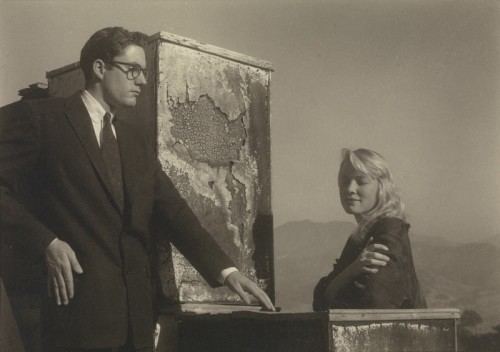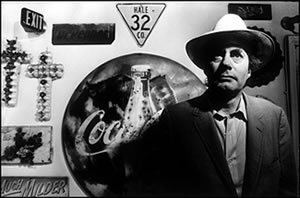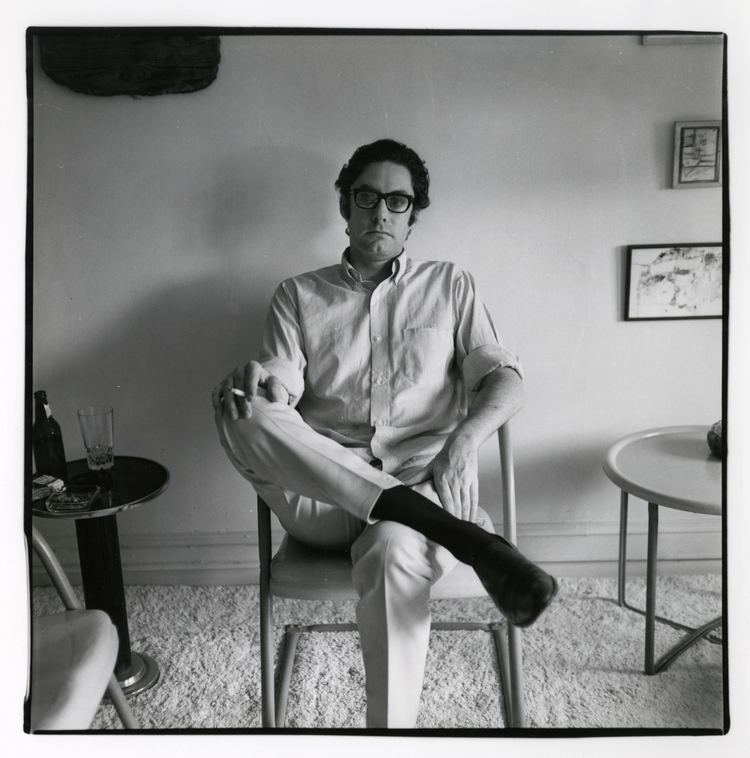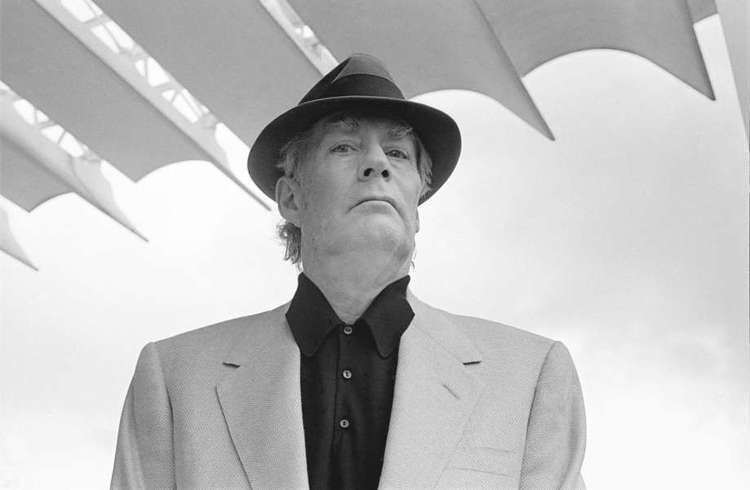Name Walter Hopps | ||
 | ||
Books Robert Rauschenberg, a Retrospective, Jay DeFeo: Selected Works 1952-1989, Jacob Kainen Similar People Edward Kienholz, Andy Grundberg, William Christenberry, Bill Berkson, Jacob Kainen | ||
This state i m in walter hopps clips
Walter (Chico) Hopps (May 3, 1932 – March 20, 2005) was an American museum director and curator of contemporary art. His obituary in The Washington Post described him as a "sort of a gonzo museum director—elusive, unpredictable, outlandish in his range, jagged in his vision, heedless of rules."
Contents

Walter hopps 2005
Early life and education

Hopps was born into a family of prominent surgeons in Eagle Rock, Los Angeles, California. He was home-tutored until junior high school, when he entered the private Polytechnic School in Pasadena. From there he went to Eagle Rock High School. In 1950, Hopps enrolled at Stanford University; a year later he switched to UCLA to study microbiology. He also studied art history.
Career

For his first exhibition, organized with his first wife, Shirley, in 1955, Hopps rented the merry-go-round at the Santa Monica Pier for $80, stretched tarp around the poles and hung nearly 100 paintings by 40 artists, including Sonia Gechtoff, Richard Diebenkorn, Mark Rothko, Clyfford Still, Paul Sarkisian, and Jay De Feo. All were for sale, none for more than $300; nothing sold. In 1952-1955, Hopps founded Syndell Studio, where his exhibitions included Action 1 and Action 2.

In 1957, he founded the Ferus Gallery, Los Angeles in partnership with Ed Kienholz, leaving in 1962 to become the director of the Pasadena Museum of Art, now Norton Simon Museum, where he mounted the first museum retrospectives of Kurt Schwitters, Joseph Cornell and Marcel Duchamp, as well as the first overview of American Pop Art, New Painting of Common Objects. Hopps' most celebrated exhibition was the 1963 Duchamp retrospective, held at the Pasadena Art Museum in its original home on Los Robles Avenue. Hopps was in his first year as curator. He had been introduced to the French expatriate's iconoclastic work in the late 1940s, during a high school visit to the Hollywood home of art collectors Louise and Walter Arensberg. When his predecessor Thomas Leavitt departed the museum in 1964, Hopps was elevated to director; at 31, he was the youngest art museum director in America. His unconventional administrative skills led to him being fired in 1967. Notoriously unavailable when needed, his amused, bemused, and frustrated staff at the Pasadena Museum who created buttons reading "Walter Hopps will be here in 20 minutes." These buttons were recreated at the Corcoran Gallery during his tenure there. Leaving Pasadena, he became in 1967 the director of the Washington Gallery of Modern Art. He served as United States commissioner for the São Paulo Biennial in 1965 and the Venice Biennale in 1972.

In 1970, Hopps was appointed director of the Corcoran Gallery of Art, of which the Washington Gallery of Modern Art had been a short-lived subsidiary, and was there until 1972. He was the U.S. commissioner of the 1972 Venice Biennale. From 1972 to 1979, he was curator of 20th-Century American Art at the Smithsonian's National Collection of Fine Arts (now the Smithsonian American Art Museum). He commented to an interviewer about that period, saying that working for bureaucrats at NCFA was "like moving through an atmosphere of Seconal."

In 1977, Hopps wrote the introduction to Visions, a popular book about Visionary art, featuring the work of San Francisco Bay Area artists Gage Taylor, Bill Martin, Cliff McReynolds, Nick Hyde, Thomas Akawie, Sheila Rose, and Joseph Parker. On the significance of the Visionary art movement, he wrote:
I was seeing a kind of art evolving out of a way of life, an art totally apart from the mainstream of the modernist art theory and practice, in which so many of us have been schooled. I was seeing the contemporary art not so much immersed in itself as art, as engaged in an ongoing dialogue with life, accessible by virtue of its shared humanity, rather than by an academic indoctrination.
Hopps was a master at "curating outside the box." Shows such as Thirty-Six Hours, 1978, at MOTA (the Museum of Temporary Art) in which he hung the work of all comers over a one-and-a-half-day period, which brought a seemingly endless procession of artists, both well-known and totally unknown, were impressarial events that enlivened the art community in which they occurred.
In 1979, Hopps became a consultant to the Menil Foundation, helping select the architect Renzo Piano to design the Menil Collection and becoming director in 1980. He was the director of the museum when it opened in 1987, but was eventually demoted to curator of 20th-century art. At the Menil, his exhibitions included a retrospective of the French artist Yves Klein as well as exhibitions of the work of John Chamberlain, Andy Warhol, and Max Ernst. He organized a Kienholz retrospective at the Whitney Museum of American Art in 1996; a second Rauschenberg retrospective (with Susan Davidson) at the Guggenheim Museum and the Menil in 1997; a survey of the works of Sharon Kopriva at the Menil in 2000 and a James Rosenquist retrospective (with Sarah Bancroft) at the Guggenheim in 2003.
Hopps died in Los Angeles after a brief hospitalization at Cedars-Sinai Medical Center. He was in Southern California for a 45-year survey of assemblage art by sculptor George Herms, which he organized for the Santa Monica Museum of Art.
Legacy
In 2001, the Menil Foundation established the Walter Hopps Award for Curatorial Achievement.
